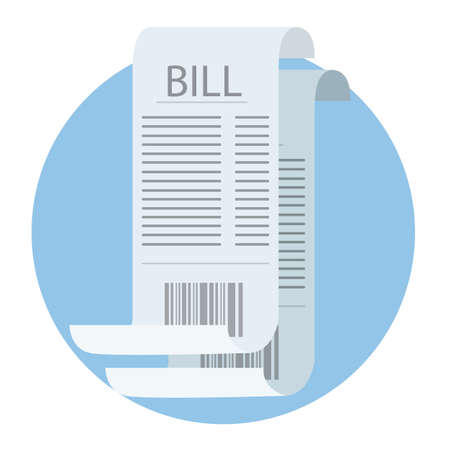1. Introduction to ADR in American Insurance Claims
When dealing with insurance claims in the United States, disagreements can sometimes arise between policyholders and insurance companies. Instead of heading straight to court, many people now turn to Alternative Dispute Resolution, often called ADR. ADR offers a way to resolve disputes without the lengthy process and high costs of a lawsuit.
What is Alternative Dispute Resolution (ADR)?
Alternative Dispute Resolution refers to various methods that help people settle disputes outside of traditional courtrooms. The most common forms of ADR in insurance claims are mediation, arbitration, and negotiation. These approaches are designed to be faster, more flexible, and less expensive than litigation.
Main Types of ADR Used in Insurance Claims
| ADR Method | Description | Key Benefits |
|---|---|---|
| Mediation | A neutral third party helps both sides reach an agreement. | Collaborative, confidential, often preserves relationships |
| Arbitration | A neutral arbitrator hears both sides and makes a binding decision. | Faster than court, usually final, can be less formal |
| Negotiation | The parties communicate directly or through representatives to settle the dispute. | Flexible, voluntary, parties control the outcome |
Why ADR is Gaining Popularity in U.S. Insurance Disputes
The use of ADR has grown significantly in recent years because it helps reduce the time and money spent on resolving insurance disputes. Many insurance policies even include clauses that require or encourage ADR before going to court. In addition, courts and regulators often support or mandate ADR as a first step. As a result, both insurers and policyholders are increasingly turning to these methods for a quicker and more agreeable solution.
2. Common Types of ADR Used in Insurance Claims
Mediation
Mediation is one of the most popular forms of Alternative Dispute Resolution (ADR) used in American insurance claims. In mediation, a neutral third party, called a mediator, helps both the insurance company and the policyholder work toward a mutually agreeable solution. The mediator does not make any decisions but guides the conversation and encourages compromise. Mediation is generally informal, flexible, and less expensive than going to court. Many insurance disputes—such as disagreements over claim amounts or coverage—are resolved through mediation before they escalate.
Arbitration
Arbitration is another common ADR method in U.S. insurance disputes. Unlike mediation, arbitration involves an impartial arbitrator who listens to both sides and then makes a binding or non-binding decision. Many insurance policies include arbitration clauses that require this process for certain types of disputes. Arbitration is less formal than a court trial but more structured than mediation. It is often used when parties want a final answer without the delays and expenses of litigation.
Negotiation
Negotiation is the simplest and most direct form of ADR. It usually involves just the parties themselves—or their representatives—working together to reach a settlement without any third-party assistance. Negotiation can happen at any point during the claims process, from right after a loss occurs to after other ADR efforts have failed. Most American insurance claims are settled through negotiation rather than litigation or formal ADR processes.
Comparing ADR Methods in American Insurance Claims
| ADR Method | Who Is Involved? | Is a Third Party Present? | Decision Binding? | Common Uses |
|---|---|---|---|---|
| Mediation | Insurer & Policyholder (plus Mediator) | Mediator (guides discussion) | No (parties decide) | Disagreements on claim value, coverage issues |
| Arbitration | Insurer & Policyholder (plus Arbitrator) | Arbitrator (decides outcome) | Yes/No (depends on agreement) | Coverage disputes, contractual matters |
| Negotiation | Insurer & Policyholder (or their agents) | No formal third party | No (mutual agreement required) | Most standard claims, early-stage disputes |
How These Methods Are Applied in Practice
In American insurance contexts, ADR methods help save time and money while keeping relationships between insurers and policyholders more positive. Mediation is often suggested by courts or state insurance departments before lawsuits can proceed. Arbitration is frequently built into homeowner, auto, and health insurance policies as a way to resolve complex disagreements. Negotiation remains the backbone of everyday claim settlements, helping both sides avoid costly legal battles.

3. Legal Framework and Industry Standards
Alternative Dispute Resolution (ADR) has become a key part of handling insurance claims in the United States. Understanding the legal background and industry rules helps both policyholders and insurers know what to expect and how to prepare.
Legal Basis for ADR in Insurance Claims
In the U.S., ADR processes like mediation and arbitration are supported by both federal and state laws. The Federal Arbitration Act (FAA) is one of the main laws, making arbitration agreements legally binding across the country. Many states also have their own statutes that encourage or require ADR before going to court, especially for insurance disputes. This helps keep courts from becoming overloaded and offers faster, often less expensive resolutions.
Key Laws and Regulations
| Law/Regulation | Description | How It Applies to Insurance Claims |
|---|---|---|
| Federal Arbitration Act (FAA) | Makes most written arbitration agreements enforceable nationwide | Allows insurers and policyholders to resolve disputes outside of court if agreed upon in the policy |
| State ADR Statutes | Laws in many states requiring or encouraging mediation/arbitration in certain cases | Often apply to insurance claims, especially auto and homeowners policies |
| Uniform Mediation Act (UMA) | A model law adopted by some states setting standards for mediation confidentiality and procedures | Protects privacy during insurance claim mediations |
Industry Best Practices and Standards
Apart from legal requirements, several industry organizations set best practices for using ADR in insurance claims. Groups like the National Association of Insurance Commissioners (NAIC) and American Arbitration Association (AAA) provide guidelines to ensure fairness, transparency, and efficiency.
Examples of Industry Guidelines:
- Clear Communication: Insurers should explain ADR options to policyholders when a dispute arises.
- Qualified Neutrals: Mediators or arbitrators should have training in insurance matters.
- Timely Processes: The goal is to resolve disputes quickly, often within 60-90 days.
- Confidentiality: Most ADR proceedings are private, protecting sensitive information for both sides.
Together, these laws and standards create a supportive environment for resolving insurance claim disputes without lengthy court battles. Knowing your rights and responsibilities under these frameworks can make the process smoother if you ever need to use ADR with your insurer.
4. Benefits and Challenges of ADR for Policyholders and Insurers
Understanding the Upside: Why Choose ADR?
Alternative Dispute Resolution (ADR) methods like mediation and arbitration are widely used in American insurance claims because they offer several practical benefits. For both policyholders and insurers, ADR can be a faster, less expensive, and more flexible way to resolve disputes compared to traditional court cases. Here’s a quick look at some key advantages:
| Benefit | Description |
|---|---|
| Efficiency | ADR processes usually move much faster than lawsuits, which can drag on for months or even years. |
| Cost Savings | By avoiding lengthy court procedures, both parties often save on legal fees and other expenses. |
| Confidentiality | Mediation and arbitration sessions are private, so sensitive information stays out of the public record. |
| Flexibility | The parties have more control over scheduling and can sometimes choose their mediator or arbitrator. |
| Preservation of Relationships | ADR is generally less adversarial, helping maintain better relationships between insurers and policyholders. |
The Flip Side: What Are the Challenges?
While ADR has its perks, it also comes with challenges that can impact both policyholders and insurance companies. Here are some common concerns:
| Challenge | Description |
|---|---|
| Enforceability | Sometimes, decisions made during mediation aren’t legally binding unless both parties agree to formalize them. |
| Impartiality Concerns | If one side feels the mediator or arbitrator is biased, it can affect trust in the process. |
| No Jury Trial | In arbitration, there’s no jury—some people prefer having a group of peers decide their case instead of a single individual. |
| Limited Appeals | Arbitration decisions are usually final with very limited options for appeal, even if a mistake was made. |
| Lack of Transparency | The private nature of ADR means there’s less public accountability compared to court decisions. |
Navigating ADR in the American Insurance Industry
In the United States, ADR has become a go-to method for resolving insurance disputes. Both policyholders and insurers need to weigh these pros and cons carefully before deciding if mediation or arbitration fits their needs. By understanding the trade-offs, everyone involved can make more informed choices about how to move forward when disagreements arise over an insurance claim.
5. Trends and Future Outlook of ADR in Insurance Claims
Recent Developments in ADR for Insurance Claims
Alternative Dispute Resolution (ADR) has become more popular in the American insurance industry over the last decade. Many insurance companies are now including mandatory ADR clauses in their policies, encouraging claimants to resolve disputes through mediation or arbitration before going to court. Technology has also played a big role; virtual mediation and online dispute resolution platforms have made the process faster and more convenient.
Key Recent Developments
| Development | Description |
|---|---|
| Virtual Mediation | More mediations are happening online, making it easier for everyone to participate from anywhere. |
| Mandatory ADR Clauses | Insurance contracts often require claimants to try ADR before filing lawsuits. |
| Specialized ADR Providers | Organizations now offer services tailored specifically for insurance disputes. |
| Faster Settlements | The use of ADR is leading to quicker resolutions compared to traditional litigation. |
Cultural Attitudes Toward ADR in the U.S.
Americans generally value efficiency and cost-effectiveness, which aligns well with the goals of ADR. Many people see ADR as a fair way to resolve conflicts without the stress and expense of a courtroom battle. However, there can still be skepticism, especially among those who feel that arbitration may favor corporations or insurers. Education about the process and transparency can help build trust in ADR methods.
Cultural Factors Influencing ADR Use
- Desire for Privacy: People like that ADR keeps disputes out of the public eye.
- Focus on Control: Parties appreciate having more control over outcomes versus leaving decisions up to a judge or jury.
- Skepticism: Some worry that arbitrators may be biased, especially when insurers select them.
- Cost Consciousness: Reducing legal fees and time spent is highly valued by both insurers and policyholders.
Predictions for the Future Role of ADR in American Insurance
The use of ADR in insurance claims is expected to grow even more in the coming years. As technology advances, we will likely see more sophisticated online platforms and apps designed specifically for resolving insurance disputes. There may also be new regulations that make ADR even more common or required before court action. Both insurers and consumers are likely to benefit from these changes as claims get settled faster and with less stress for everyone involved.

